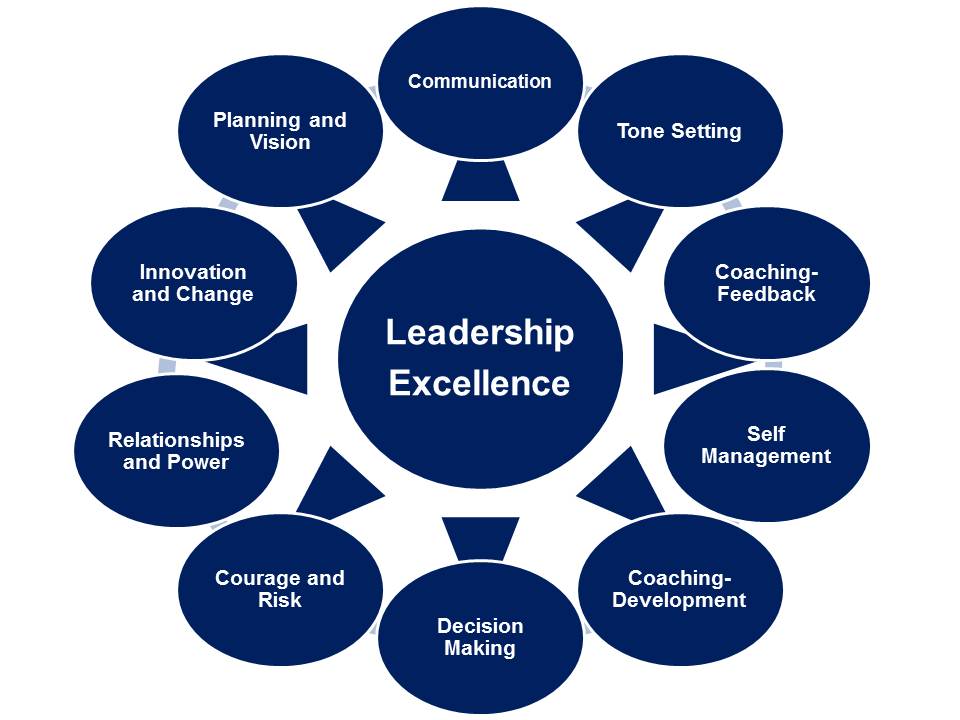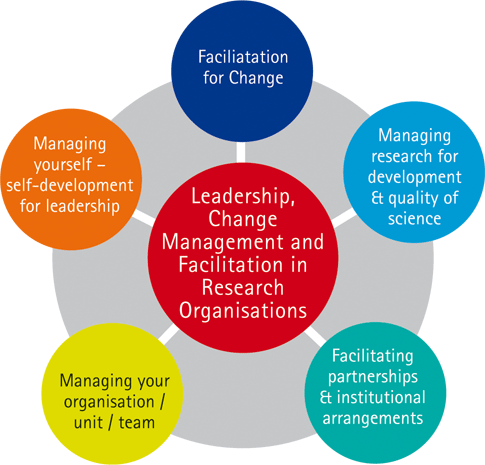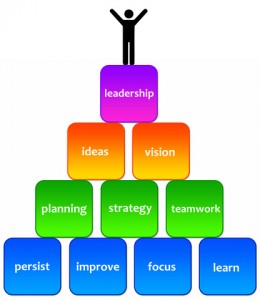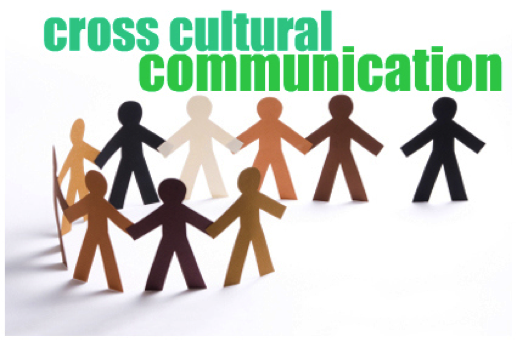Title: Effective Leadership – Within this study, the topics being synthesized are the philosophy of leadership within the 20th and the 21st century. Furthermore, the skills and characteristics of a leader or manager are going to be synthesized, showing the reasoning behind having these certain skills.
Evaluate the philosophy of leadership within early years settings by critically analysing the characteristics and competencies of leadership. Ensure that you include why it is essential to have a leader who understands the importance of an effective and multi-disciplined team of staff
Over the 20th and 21st century the term leadership has been changed several times and the perception of what a leader is has also changed. Extensive research has been taken under the topic of ‘leadership’, it has been discovered that through the 20th century there have been more than two hundred different meanings (Northouse, 2010). In the early 1900’s it has been seen that leadership was defined as the centre of power and domination and further down the line in the late early 1900’s the term was defined as persons having certain skills, values, motives and also being able to deal with conflicts (Northouse, 2010). However, Bonnici (2011) explains that leadership is about receiving praise, it is about being influential to teams and improving the student’s way of learning. Traditionally, leadership has been defined as a person having certain personality traits and qualities (Rodd, 2006). However, in recent research the definitions of a leader have been associated with shared ideas and working together (Dunlop, 2008)
Furthermore, Effective Leadership is perceived as inspirational, influential and charismatic, whereas management is about the organisational techniques and controlling things (Walker, 2011). Essentially, leadership is constructing and sustaining a vision and interpersonal relationships and management is monitoring activities and functioning (Davies & Burnham, 2003). There are many misconceptions of the term leadership and is usually mistaken as ‘Power’, this is down to the progression of influence (Northouse, 2010).
There are many general leadership theories and few well known. House and Mitchell devised the Path-Goal theory which is centralised on a model of motivation and is a part of the contingency approach (Burnes, 2004). The leader must provide the employees with support, confidence, and influential behaviour to feel able to attain their future goals (Burnes, 2004). There are two different situational contingencies within this approach; one being staff member’s individual characteristics and the second being the environment which they work in (Alanzi and Rasli, 2013). This theory involves around different situations and behaviour and how the leader’s motivation could lead to other staff being achievement-orientated (Alanzi & Rasli, 2013). However, there is a lot of debate whether path-goal theory is efficient within settings and Alanzi and Rasli (2013) explain further that good leaders will know and understand when and what approach to use when needed. Furthermore, Devader and Alliger (1986) discussed that using the Meta Analyst approach and self-report measures of 120 surveys and discovered that the evidence of its efficiency was infrequent. From the surveys that were conducted analysed, they discovered the environment and the task would not be adequate, it will not change the behaviourism (Devader and Alliger, 1986). Therefore this implicates that the behaviour of the leader will not affect the performance of the subordinates (Devader and Alliger, 1986). The weaknesses involved in the path-goal theory are lack of research and findings. However, Aubrey (2011) explain that the theory does not encourage the staff/team to act themselves as leaders when needed.
Psychologist Kurt Lewin formulated this style of effective leadership in the 1930s and many people followed his path. Lewin debated that there are three key aspects to the styles, these are Autocratic, Democratic and Lasseiz-Faire (Lussier & Achua, 2015). Lewin believed through his studies a leader is not solely based on personality traits but he moved towards different behavioural styles (Lussier & Achua, 2015). However, Lewin has also gained many criticisms of this three step approach and academic sources have noted that he has been progressively critiqued as only appropriate small scale alterations in stable environments and also stated that his model has issues of ignoring conflict and organizational politics (Burnes, 2004).
The autocratic style involves a leader who dictates methods of work and staff, struggles to involve staff in decisions of the setting and also limits the staff to doing different jobs (Khasawneh & Futa, 2013). This could be a leader is the owner of the business.). Therefore, this leader could be over-ruling to staff and lead parents/staff feeling under-valued (Johnston & Williams, 2012). Within an early years setting, it is vital that parents and staff feel welcome. If staff are not enjoying their job, this may lead to retention (Sadek & Sadek, 2004). Similarly, Sadek and Sadek (2004) explained that an autocratic leader is ‘like a spider in the middle of the web’, this could indicate that the leader is the only one with the control and power. Nonetheless, there are positives of the style such as the leader of the setting/business is the only one able to make decisions, also this could mean that the leader makes sure things run smoothly (Johnston & Williams, 2012).
The second of the style is democratic; this type of leader is able to welcome ideas and encourage staff to participate in all decision-making and closely watches/supervises (Lussier; Achua, 2015). A style like this could be welcoming, and staff may feel as though they are able to input their ideas as to what needs to be improved and sustained (Johnston & Williams, 2012). Lussier and Achua (2015) indicate that the democratic style increases the chances of staff feeling a valued member of the team, this will lead to present and future motivation and commitment. However, Johnston and Williams (2012) discuss that staff may misunderstand and feel as though the democratic leader may not have any true values or visions themselves. Furthermore, being a democratic leader in a setting will be more organised and have staff feeling valued to the leader (Johnston & Williams, 2012).
The third style is called ‘Laissez-faire’ which is also seen as non-directive and leaders who pursue this style may prefer to let the group of staff set their own goals. However, if problems arise within the setting, it is likely that they will be unable to get the staff back to being positive and motivated (Wood, 2012). However, leaders within an early years setting acting in the style of ‘laissez-faire’ could lead the other practitioners to become somewhat lazy and inefficient (Wood, 2012). In addition, Johnston and Williams (2012) state that a setting ran by a laissez-faire leader would come across and welcoming to children, parents and recruiting new staff. However, a setting ran by a leader who wants to work for an ‘easy life’ could also be seen as chaotic at times due to the lack of management (Lussier & Achua, 2015). Similarly, Wood (2012) adds on explaining that staff could lack in vision or no direction, also this could lead to future retention as the staff feel unsatisfied with the way the setting is.
Furthermore, Goleman’s research indicates that the visionary or effective leadership style is the most efficient and this is by making the vision everyone’s future goals (Burns, 2010). Leaders with this set style are able to connect with every individual in the workplace and know their capabilities and be able to give them time to grow and also how to achieve their goals (Mersino, 2013). Staff are able to benefit with this type of leader as they are able to tell them what they are doing right (Mersino, 2013). Visionary leaders heavily rely on the competencies, emotional intelligence, self-confidence, self-awareness and the ability to be empathetic to staff or others involved (Wood, 2012). In contrast, there are many issues with this style as Burns (2010) did not define how to be a visionary leader, this could come across as confusing. Furthermore, as this happened many researchers began to analyse the theory and show the cracks of it (Solan, 2008). Similarly, Bennis and Nanus (2003) searched further into the term ‘vision’ and researched into the behaviours of leaders with this style. They set out to do qualitative research and interviewed 90 different leaders. To add on Sashkin and Sashkin (2003) explained that Bennis and Nanus (2003) discovered that leaders have five different patterns of behaviour which were all down to trust, confidence attention and more.
One of the earliest leadership researches was based on characteristics of efficient leaders by Gregoire and Arendt (2004) who split these into a group of 5.
- Surgency: – The traits being the individual characteristics and sociability.
- Conscientiousness: – Dependability, the need to achieve and integrity.
- Agreeableness: – Positivity, usefulness and connection.
- Adjustment: – Emotional Intelligence, self-worth and strength of mind.
- Intelligence: – Desire for knowledge, broad-mindedness and being learning orientated.
Since this approach based of characteristics, Jillian Rodd (2006) discussed personal assets of an early year’s leader. However, Jones and Pound (2008) indicate that characteristics, attitudes and skills are the base of an early year’s leader. Nowadays, researchers are following to think that the term effective leadership is now based solely about the interaction between leaders, staff, parents and agencies on the outside and also the emotional competencies between this (Jones & Pound, 2008).

Organisation is an important aspect of being a leader or a manager in a setting and this is because everything can be at hand. Practitioners that have a system in place for how they organize paperwork make it easier for inspections, to call people when in emergencies and also to look at different requirements for the children, for example, food requirements (Gabriel, 2005). Having paperwork at hand means that if anything goes wrong or they need to back themselves up by showing inspectorates that they have their filing systems up to date and showing that the staff are qualified up to standard (Gabriel, 2005).
Effective Leadership
A leader needs plenty of skills to be able to both manage and lead a setting. This includes many aspects such as assertiveness. Being assertive without needing to be may put the staff off their work and this may lead to possible retention (Stein-Parbury, 2013). However, being assertive for the right to be heard, valued and respected. Gabriel (2005) found within their research that practitioners were a lot better at being assertive in optimistic situations and this led to staff feeling appreciated and respected themselves. However, most of the research that has been done showed that assertiveness is usually seen in conflict and negative situations (Stein-Parbury, 2013). Furthermore, if an early year’s practitioner spoken to a staff member and told them to do something that they didn’t want to do, they would have to act assertively and also bring in an empathetic tone and let them know how it would help them move up and development (Stein-Parbury, 2013). Similarly, Maravelas (2005) explains that with high assertiveness, staff can become intimidated and undermined. On the other hand, she discusses that there is a low and high assertiveness and the lower toned assertiveness is used less (Maravelas, 2005).
Ofsted highlight the significance of having a strong leader within an early years setting which can influence how they are marked out of good and outstanding operations. The report also states that the visited settings have had few strong leaders who have the ability to self-evaluate and each staff being able to reflect on their own work (OFSTED, 2013). Furthermore, in the inspections, the leaders explain that it is vital to have staffs that are able to interact with the children effectively as it has a profound effect on the children’s development and learning (OFSTED, 2013). Ofsted created a survey that they gave to their ‘strong leaders’ and the findings were that they were inspiration to their staff, they were persuasive and passionate (OFSTED, 2013). Furthermore, the leaders were able to explain to other staff within the setting what strategies could work and why and also how this may be effective for children’s learning and development (OFSTED, 2013). Furthermore, due to the demand of “outstanding” schools and settings, there are many criticisms that OFSTED are facing, such as a member of the think tank explaining that “you’d be better off flipping a coin” and this shows that OFSTED are possibly becoming unreliable due to the amount of inspections that they are facing (Flanagan, 2014). In light of this, the inspections that OFSTED give are reasonable guidelines for schools and other settings. However, staff within a school may become pressured to do everything before the inspection as it is only once a year that it is done (Flanagan, 2014).
Blatchford and Manni (2006) explain that communication is key for all leaders working within a setting. Communication involves many factors, these include: reflecting, empathising, verifying, acknowledging, consulting and listening. Being accessible is vital for communication. Similarly, communication in the work place is vital, working with children involves a lot of communication as the job is pressuring and demanding, Making sure that everyone knows their role is especially important as the leader does not want the staff to make decisions without them and without consent to do so (Moyles, 2006).
In the early months of 2004, the government had dedicated themselves to use the United Conventions on the Rights of the Child (UNCRC). Furthermore, in 2011 the government devised a new law which is called the Rights of Children and Young Persons (Wales) Measure which also helps to confirm that the principles within this are actively used (Welsh Assembly Government, 2012).
There are also policies put in place to make sure settings such as nursery settings, family centres and child-minders have quality standards, such as nappy changing facilities (Welsh Assembly Government, 2012). One of the biggest of the policies is health and safety, Record keeping is also one of the health and safety standards. Records will consist of the parent’s contact details, the child’s health records (if there are allergies), medical administration, and statements on procedures in emergency, records of accidents (Welsh Assembly Government, 2012).
Over more than several years policies and governments have been changing the way they are working, especially with child care. Problems have risen within the past 20 years with mothers having to work and having to pay for childcare. It has been found that working parents pay more than twice as much for childcare than they do for food and bills (Lyus, 1999). Rutter (2015) has also found that 25% of families can afford to pay for full-time child care, whereas the other 45% rely on unreliable sources of care such as relatives, babysitters and friends (Lyus, 1999). In 2015 the family and childcare trust sent out a childcare cost survey and the findings were that parents still have to find the money to fund such necessities. Child care has risen for children under the age of two by 33% by the parliament (Rutter, 2015)
There a several different approaches to define leadership theory, for example the trait approach. Devader and Alliger (1986) established that traits of the personality were intensely related with insights of leadership. Furthermore, Kirkpatrick and Locke (1991) claimed that efficient leaders are diverse types of individuals in several ways. However, Stogdill (1982) had conclusions and his findings were that individuals will not become leaders because of certain personality traits that they have, but because they are able to be a leader in certain situations and then not necessarily be a leader in a different situation. Emotional intelligence is an important factor of our leadership skills; Devader and Alliger (1986) suggests that emotional intelligence entails two competencies which are personal and social. These include self-awareness, confidence and motivation (Northouse, 2010). However, the trait approach has several recognizable positives and has been researched for a century with theorists to back it up; secondly this approach shows what type of personality would fit a leadership role (Northouse, 2010). Nevertheless, the trait approach also has several weaknesses which could be critical, firstly it doesn’t state a definite depiction of the approaches needed to become a leader (Northouse, 2010). Furthermore, Stogdill (1982) implies that it is problematic to separate traits when there has been no insight to situational factors which is equally important as the leader might not lead in certain situations.
Since leadership has become wide spread within settings raising achievement in children, this is called shared / distributed leadership. This term is where a team within a setting are all active leaders other than the head leader (Lindon & Lindon 2011). Other team members have a role to play and it is their responsibility and feeling as they are capable to act as a leader in their own enjoyment (Lindon & Lindon, 2011). Distributed leadership is a well-known democratic theory, also in the category for ‘transformational leadership’ (Rodd, 2006), Moreover, this kind of effective leadership focuses on practice rather than delegation based on an individual’s expertise and encourages staff and practitioners to excel further and motivate them to work harder towards their goals (Rodd, 2006).
Lindon and Lindon (2011) explain that there are many misconceptions of the term and can be problematic within a setting. Distributed and shared leadership have separate meanings, the difference is that shared is that the leader delegates different roles to practitioners (Rodd, 2006). This would lead to effective partnerships within the work place, especially communicating with each other. Communicating is important when being a distributed leader and being able to listen to views of others, understanding and empathising with them (Williams and McInnes, 2005). Listening means providing individuals with their time and privacy and may require constant appraisal so that the staff feel invaluable (Williams and McInnes, 2005). Entrusting staff may be problematic, but with plenty of team working and outings, this may be reduced over time and staff time needs to be used efficiently (Williams and McInnes, 2005).
An example of shared/distributed leadership is family centres, such as sure start family centres. Becoming a leader within a family centre involves the ethic of care and sustaining caring relationships (Blatchford, 2006). Family centres involve multi-agency teams which consist of professionals within health care systems and supporting parents and children holistically. With extensive research in to ‘Sure Start’ family centres there have been many noted challenges. The challenges consist of: maintaining high quality services, leading through change, maintaining morale and motivation, increasing vulnerability, managing outside agencies (Rodd, 2006). Furthermore, family centres need staff that are able to form strong relationships by partnering with children, staff, parents and multi-agencies (Rodd, 2006).
There are many successes in working with multi-agencies, however there are also challenges. The children’s act (2004) brought out a plan to improve children and family services and emphasized the importance of integrated teams of educational professionals, health professions, social workers, job advisers and support for vulnerable parents and young people (Aubrey, 2011). Since the Every Child Matters Green Paper (2003) was devised because of the Victoria Climbie died from negligence and reports were made that on 12 occasions integrated services could have been able to help. This Green Paper is also along with the Children Act 2004. Every Child Matters (2003) discuss that ‘integrated working focuses on encouraging and enabling all professionals to work together and to have common visions which they can deliver, building around the needs of the individual children’. The professionals involved in working in a multi-disciplinary team could be:
- Police
- School teacher
- Early Years Practitioner
- Midwife
- GP
- Social Worker
- Speech and language therapist
- Health Visitor
- Educational psychologist
There are several key aspects of working with other professions, such as having an early intervention before problems become more of an emergency; The CAF which is Common Assessment Framework and is also consent based (NDNA, 2007). Furthermore, multi-agency working also involves record keeping, sharing information to the right people, working with the family and the leader (NDNA, 2007). There are also policies and legislation supporting multi-agency working such as EPPE Report (2003), local safeguarding children board (LSCB) and Children’s Act (2004-06).These legislations have strengthened the meaning of multi-agency working bringing all professionals together in sight of the child (NDNA, 2007). However, there are many potential barriers for integrating professions which can be parental consent. Parents can often feel judged and pressured by certain individuals. In comparison, Aubrey (2011) explain further that with a code of ethics within the setting and moving forward with strategies such as developing a mutual respect and trust, support the continuing development of the parents’ skills and help to develop them further. Furthermore, other publications such as the DCELLS (2005) explain that the challenges could include recruitment. Recruitment can be vital in a centre with such professionals due to new talent, and this could show more of a diverse work-force.
Methods of communication are also important within the early year’s sector with staff. For example, communicating face to face now and again is essential and gives the member of staff time to feel listened to and a valued member (Daly & Byres, 2009). However, Lussier and Achua (2015) explain that communicating one on one could also have negative effects from being unable to record informal discussions and make other team members worried that they haven’t been in a meeting and therefore they may feel less valued. Group meetings are also an easy form of communicating; this would consist of staff being able to make their opinions known and to share views on certain aspects. Employee handbooks can also be an official way of communicating with the leader and other staff, this could be important when a job role has changed (Daly & Byres, 2009) However, this could also have a negative effect as all written information needs to be up to date and this could apply with the National Minimum Standards (Daly & Byres, 2009).
Parents are as much a part of their child’s education as the practitioners and Bowlby (1969) stated that parents are the child’s first source of learning and need to be in close contact with the work that is provided to the children (Daly and Byres, 2009). In successfully managed settings, the leader will have to keep the parents up to date and communicate about the development of their child. Parents being able to feel welcome, valuable and able to trust the practitioners are a key aspect (OFSTED, 2013). Childcare providers can assure the parents that the information that they give them about the child is with them and that they will take care of every child’s needs (OFSTED 2013). It is important that parents feel that they can confide in the manager/practitioner so that they can give them the information that they need and so they can be used to organise activities for particular needs (OFSTED, 2013). There are many ways of keeping parents frequently updated on the development of their children. For example, there are systematic approaches which enable the parents to be updated every six weeks. The ways that communication can be easier for parents/practitioners are regular text messages through mobile phones, emailing via the internet and also the settings website page (OFSTED, 2013). However, systematic approaches to the means of communication can also be hard due to parents having lack of technology to enable them to contact the settings (Bryant & Oliver, 2009). In sight of challenges, many parents feel as though they are being judged by their children’s practitioners and back away from having face to face contact with them weekly (Moyles, 2006).
Challenges that are faced within the workplace need to be underpinned by the leader for some form of conflict resolution. For a good leader, being able to notice staff that are not getting on for some reason should be easy, however sometimes this may be challenging as staff do not want to go through problems that they are facing (Moyles, 2006). There many general ways of how a conflict is, competition, accommodation, avoidance, collaboration and compromise (Rodd, 2006). Leaders with a certain amount of emotional intelligence will be able to understand strategies how to resolve conflicts between staff members. Generally, solving problems such as conflict are able to gather information and evidence to what has possibly happened, and after the time it has taken to get the information, they may get staff in separately and speak to them (Rodd, 2006). However, Sadek and Sadek (2004) explains that many colleagues suffer from conflicts between each other now and again and this may hinder their ability to be efficient to children or other adults within the setting.
ACAS (2015) provide conflict resolution for managers and leaders to show them effective ways of problem solving through times like this. ACAS (2015) also offer information and case studies for leaders and managers to help them with these possible challenges. The government sees wider benefits to improve ‘leader and employee relationships’ which will lead to the ‘high trust relationships’. They have come up with a method of how to manage and avoid conflict within the workplace. Developing strategies which may help manage conflict before it may become a problem is essential within the workplace, such as developing handbooks for staff before they enter the place of work (ACAS, 2014). A democratic leader would be needed in such situations, as this would be an empathetic situation in many cases and they will not presume the problem, they are able to communicate informally (ACAS, 2015). The steps which can be taken are 1. Informally asking an individual to come and talk to you about the problem. Furthermore, if the informal stage isn’t as effective as it is needed then the issue would need to be investigated informally. 3. If stage 2 doesn’t work, then internal procedures need to be used (ACAS, 2015). Finally, making diagrams which could also be designated to the staffroom wall could be used for staff to understand policies and procedures which may be used when a conflict arises (ACAS, 2015). Adults need as much support during team building exercises as much as children need help when they have conflict with peers. Team building is vital within any daily job or setting as colleagues need to get to know each other and get to know how to work together on a daily basis (Williams and McInnes, 2005).
To conclude, this discussion shows leadership in positive and difficult situations. Distributed leadership is seen as one of the most important factors of a setting and partnerships with parents are also significant. The organisation ACAS (2015) has given leaders and managers information and procedures on many challenges that will be faced through working with parents, staff and children. Overall, the most efficient style is Goleman’s visionary leadership, where all staff are aimed towards the same outcome and goal.
References
ACAS (2015) Mediation and Early Resolution.
ACAS (2015) Conflict Management.
Alanazi, T & Rasli, A. (2013) ‘Overview of Path-Goal Leadership Theory. Journal of leadership. London: ED Publications.
Aubrey, C. (2011) Leading and Managing in the Early Years. 2nd ed. London: SAGE Publications Ltd.
Bonnici, C. (2011) A Successful Leadership Style. Lanham: Rowman & Littlefield Education.
Bryant, J. & Oliver, M. (2009) Media Effects. New York: Routledge.
Burnes, B. (2004) Kurt Lewin And The Planned Approach To Change: A Re-Appraisal. Journal of Management Studies.
Burns, J. (2010) Leadership. London: Harper Perennial Modern Classics. 33-56.
Bennis, W & Nanus, B. (2003) Leaders: Strategies for Taking Charge. London.: Harper Business.
Blatchford, I, and Manni (2006) Effective Leadership in the Early Years Sector (ELEYS) Study – Research Report, London: Institute of Education, University of London/General Teaching Council for England.
Daly, M. & Byres, E (2009) Early Years Management in Practice. Harlow: Heinmann.
Davies, B. & Burnham, A (2003) The Handbook of Educational Leadership and Management. London: Pearson Education.
Department for Education (DfE) (2010) Working together to Safeguard Children: A guide to interagency working to safeguard and promote the welfare of children [London]: Department for Education (DfE).
Devader and Alliger (1986) A meta-analysis of the relation between personality traits and leadership perceptions: An application of validity generalization procedures. Journal of Applied Psychology.
DfES (2005) Children’s Workforce Strategy:A Strategy to build a world class work force for children and young people.
Dunlop, A. (2008). A Literature Review on Effective Leadership in the Early Years.
Every Child Matters (2003) The Stationery Office, Effective Leadership. Norwich.
Family and Childcare Trust. (2015) Frustrated Parents Take To Parliament To Demand Answers On Childcare.
Flanagan, P. (2014) Ofsted Inspections: ‘You’d Be Better Off Flipping A Coin’.
Gabriel, G. (2005) How To Thrive As A Teacher Leader. Alexandria, Va.: Association for Supervision, Effective Leadership and Curriculum Development.
Gregoire, M & Adrent, S. (2004) Effective Leadership: Reflections over the past 100 years. Journal of the American Dietetic Association. 103
Johnston, J. & Williams, L. (2012) Early Childhood Studies. England – Pearson Longman.
Jones, C & Pound, L (2008) Effective Leadership And Management In The Early Years: From Principles To Practice. London: Open University Press.
Kirkpatrick, S & Locke, E. (1991) Effective Leadership: Do Traits Matter?. Academy of Management. 5 (2), 48-60.
Khasawneh, A & Futa, M. (2013) The Impact of Effective Leadership Styles Used by the Academic Staff in the Jordanian Public Universities on Modifying Students’ Behavior: A Field Study in the Northern Region of Jordan . International Journal of Business and Management. 8
Lindon, J. & Lindon, L. (2011) Effective Leadership and Early Years Professionalism: Linking Theory to Practice: London: Hodder Education.
Lussier, R. & Achua, C. (2015) Effective Leadership: Theory, Application, & Skill Development. 6th
Lyus, V. (1999) Management in the Early Years. London: Nelson Thornes.
Maravelas, A. (2005) How To Reduce Workplace Conflict And Stress. Franklin Lakes, NJ: Career Press.
Mersino, A. (2013) Effective Leadership and Emotional Intelligence For Project Managers. United Kingdom: AMACOM.
Moyles, J. (2006) Effective Leadership and Management in the Early Years. Maidenhead: Open University Press.
Northouse, P. (2010) Effective Leadership. Thousand Oaks: Sage Publications.
OFSTED (2013) Getting it Right.
Rutter, J. (2015) Childcare cost survey 2015.
Rodd, J. (2006) Effective Leadership in Early Childhood. Maidenhead, England: Open University Press.
Sadek, E. & Sadek, J. (2004) Good Practice In Nursery Management. Cheltenham: Stanley Thornes.
Sashkin, M & Sashkin, M (2003) Leadership That Matters: The Critical Factors for Making a Difference in People’s Lives and Organizations’ Success. London: Berrett-Koehler.
Solan, A. (2008) The Relationships Between Emotional Intelligence, Effective Leadership, And Organizational Citizenship Behavior In Continuing Higher Education. London: Hodder Education.
Stein-Parbury, J. (2013) Patient and Person: Interpersonal Skills in Nursing. Australia: Publisher: Churchill Livingstone Australia; 5 edition.
Stodgill. (1982) Stogdill’s Handbook of Effective Leadership: A Survey of Theory and Research, Revised and Expanded. United States: Macmillan USA.
Walker, A. (2011) Organizational Behaviour in Construction. Chichester, West Sussex, UK: Wiley-Blackwell.
Welsh Assembly Government. National Minimum Standards for Regulated Child Care, 2012
Williams, J. & McInnes, K. (2005) Planning and Using Time In The Foundation Stage. London: David Fulton.
Wood, J. (2012) Communication in Our Lives. Sydney: Wadsworth / Cengage Learning.
View Business Management Dissertations Here
Leadership Dissertation Topics




